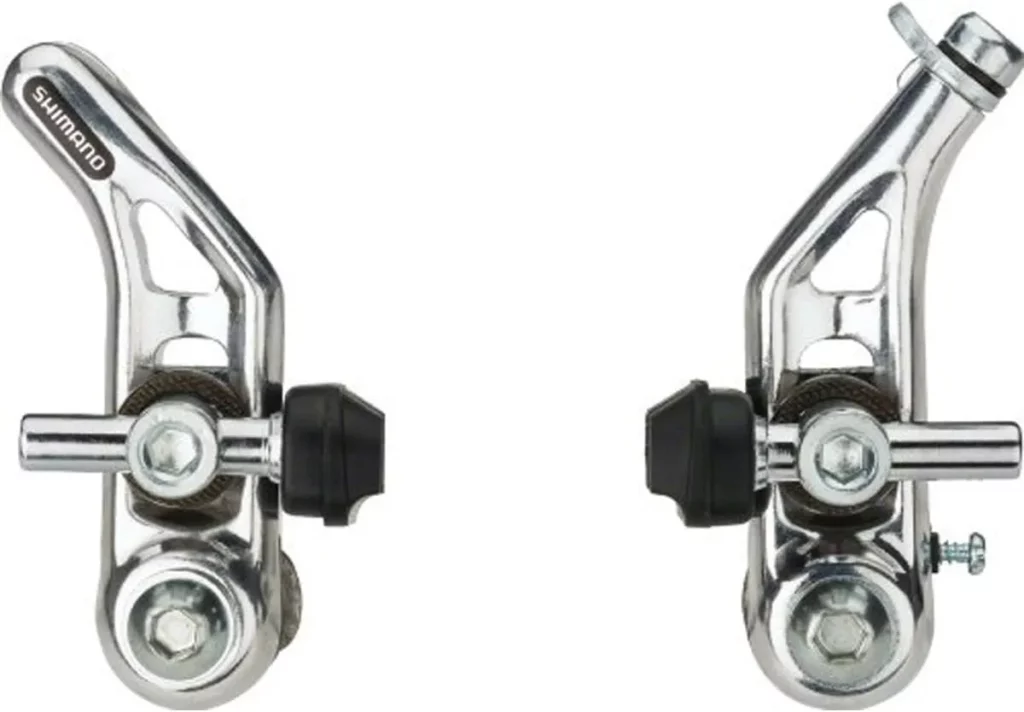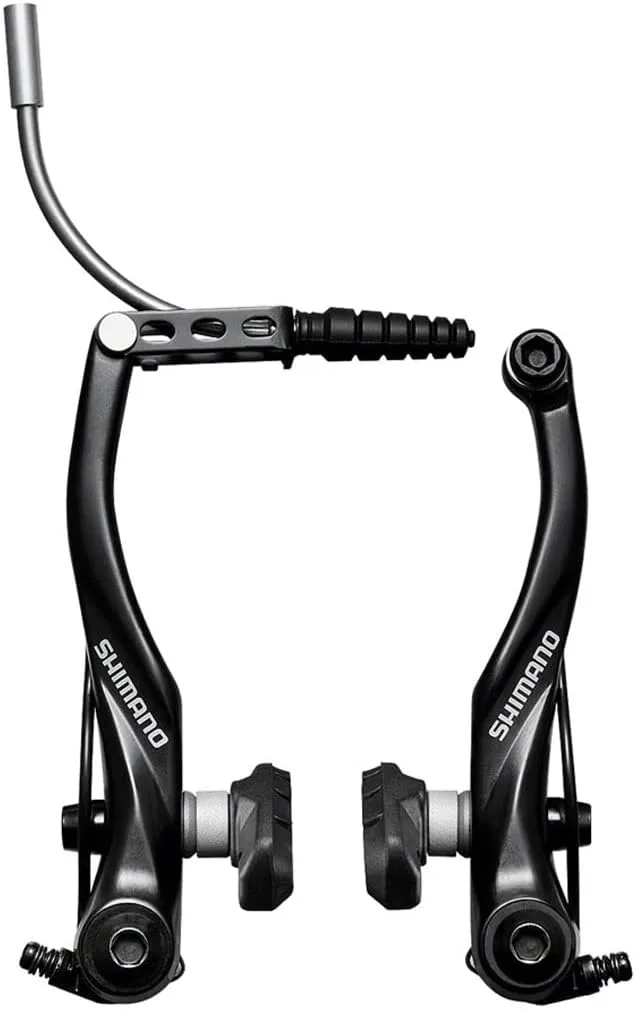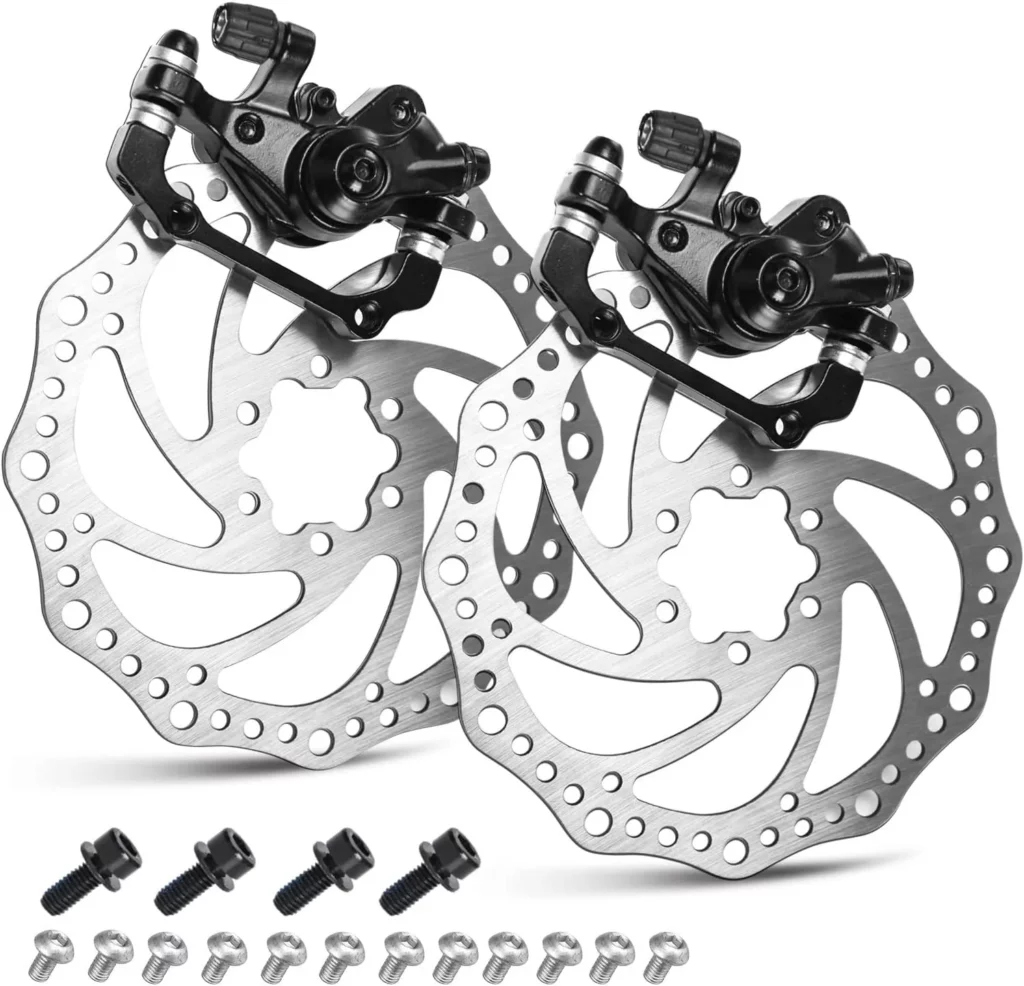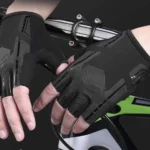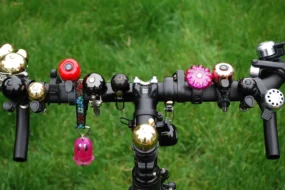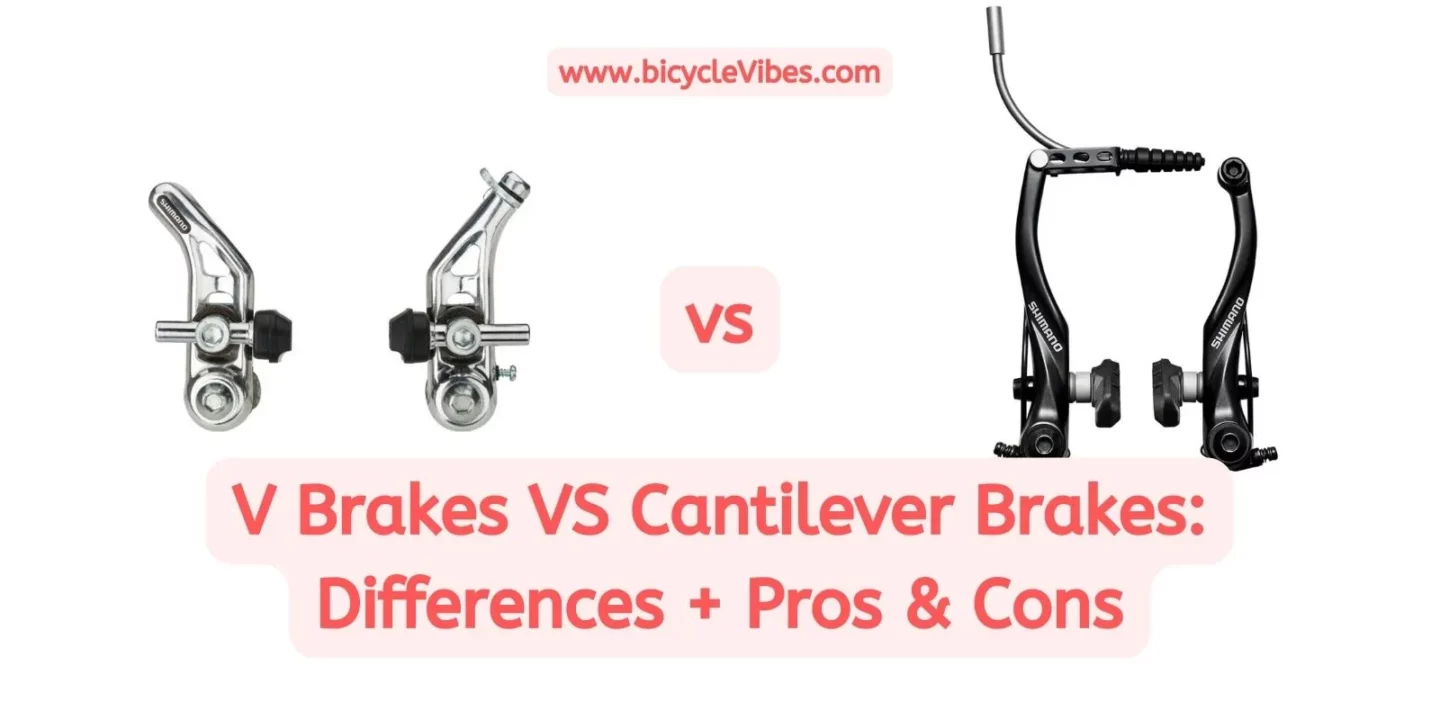
There are various brake systems used in cycling, with cantilever brakes, V brakes, and disc brakes being the most common. Cantilever and V brakes fall under the category of caliper brakes. As a cyclist or someone interested in cycling, it can be perplexing to determine which type is superior and why. Therefore, in this discussion, I will elucidate the advantages and disadvantages of cantilever brakes versus V brakes.
Cantilever brakes pose a greater challenge when it comes to adjustment. On the contrary, V brakes have limited clearance, making cantilevers more suitable for muddy conditions. Additionally, V brakes exhibit superior strength and are gentler on your hands during braking maneuvers.
To gain a comprehensive understanding of which brake type best suits your needs, let’s delve deeper into these factors. Subsequently, I will elaborate on each of these pros and cons, shedding light on how V brakes and cantilever brakes compare to other bicycle braking systems available.
Table of Contents
The advantages of Cantilever brakes over V brakes
Cantilever brakes, although an older style of bicycle brake, remain relatively common. In the grand scheme, cantilever brakes may not surpass V brakes in overall performance, but they do hold a specific advantage over V brakes.
The key advantage of cantilever brakes lies in their generous clearance between the brake components and the tire rim. This attribute proves invaluable in muddy conditions, where V brakes might trap mud, impeding pedaling. On cantilever brakes, mud can pass beneath the brake pads and be flung off, ensuring smoother rides in such conditions.
Nonetheless, when considering the overall comparison, V brakes emerge as the superior choice for several reasons:
- Ease of Adjustment: V brakes are notably simpler to adjust, providing a hassle-free experience for cyclists.
- Ergonomics: V brakes are more user-friendly, requiring less effort to engage, making them a preferred choice for riders.
Having acknowledged these factors, it’s essential to understand that cantilever brakes still perform admirably and are a reliable choice. In the subsequent section, we will delve into a detailed explanation of why V brakes outshine cantilever brakes. Once you grasp the superiority of V brakes, we will explore the feasibility and difficulty of replacing cantilever brakes with V brakes.
The advantages of V brakes over Cantilever brakes
– V brakes are easier to squeeze and use
The majority of cyclists commonly report that V brakes demand less hand strength to engage, primarily owing to their design. Both cantilever and V brakes, however, possess the capacity to lock out the wheels by applying significant pressure, causing the tire to come to a complete halt.
This attribute assumes paramount importance for riders who favor high speeds or frequently navigate downhill terrains. As any cyclist knows, the descent inevitably follows an uphill climb. Therefore, even in relatively flat riding environments, this advantage remains substantial, especially for those who require rapid and forceful braking.
Furthermore, for individuals of greater weight, V brakes offer a notable advantage. Their ability to provide ample stopping power aligns well with the increased force required to decelerate and bring the bicycle to a halt.
In urban or city-type settings, where unpredictability looms around every corner, the enhanced stopping power of V brakes proves significantly safer. The urban landscape teems with sudden vehicle maneuvers, obscured pedestrians, and unforeseen obstacles, necessitating the ability to apply brakes promptly and effectively.
In light of these considerations, the capacity to achieve quicker stops with V brakes becomes a crucial safety feature, prompting the argument that disc brakes may even represent a superior choice for this type of city riding.
– V brakes are easier to adjust than cantilever brakes
Caliper brakes feature a design with two wires extending from the brake pads to a central point. Adjusting these brakes can prove more cumbersome compared to V brakes. V brakes offer the advantage of independent wire tightening via screws on the brake mechanism, making adjustments more straightforward.
Furthermore, caliper brakes introduce multiple adjustment directions for the brake pads themselves. Achieving the precise height and angle can be a frustrating endeavor. In contrast, V brakes maintain fixed pad positions, minimizing the need for intricate and repetitive tweaks.
Routine brake pad adjustments are essential to ensure optimal performance. While you can go a considerable duration without adjusting them without immediate repercussions, a regular adjustment schedule is advisable. The frequency may vary, typically ranging from every two weeks to a month, contingent upon your daily or sporadic usage.
In the realm of competitive cycling, where milliseconds can separate victory from defeat, meticulous brake adjustments before major races confer a significant competitive edge. In this context, V brakes streamline the process, saving valuable time and enhancing overall performance.
Cantilever brakes vs V brakes vs disk brakes
The three most prevalent brake types found on bicycles include cantilever, V brakes, and disc brakes. Having discussed the advantages and disadvantages of cantilever brakes compared to V brakes, let’s now explore the reasons why disc brakes excel or lag behind V brakes:
- Enhanced Stopping Power: Disc brakes offer superior stopping power when compared to V brakes. This means they can bring your bike to a halt more effectively and quickly, enhancing overall safety.
- Tire Trueness Irrelevance: In the context of disc brakes, the condition of your tires is less critical. Even if your tires are not perfectly true, you can still ride safely with disc brakes, as they are less affected by minor tire imperfections.
- Hydraulic Auto-Adjustment: Hydraulic disc brakes possess an auto-adjustment feature that compensates for brake pad wear. This ensures consistent braking performance over time, reducing the need for frequent manual adjustments.
- Preservation of Rim Integrity: Unlike V brakes, which exert force on the wheel rims during braking, disc brakes exert force on a rotor mounted at the hub. This preserves the integrity and longevity of the wheel rims.
- Versatility in All Conditions: Disc brakes excel in various weather conditions, including rain. They maintain reliable performance even when wet, making them a dependable choice for all-weather riding.
Disc brakes are known for their superior stopping power and ease of use compared to V brakes
Disc brakes are widely recognized for their superior stopping power and ease of use compared to V brakes and cantilever brakes, as corroborated by various sources. Interestingly, some prominent online bicycle retailers may not emphasize this crucial factor when comparing disc brakes to V brakes. Nevertheless, it’s a point repeatedly emphasized by numerous individuals within online cycling communities.
The advantage of increased braking power offered by disc brakes becomes even more pronounced for heavier riders. For individuals with greater weight, the ability of the brakes to effectively slow down and stop the bike is notably enhanced, contributing to enhanced safety and control during rides.
Hydraulic disk brakes auto-adjust as the brakes wear
Hydraulic disc brakes stand out due to their unique ability to automatically adjust as the brake pads wear down. In contrast, the other two common brake types – rim brakes and standard disc brakes – require manual adjustments.
While adjusting V brakes is generally straightforward and manageable, the process can become frustrating when dealing with cantilever brakes, as previously discussed. Cantilever brakes often pose challenges and can be cumbersome to fine-tune, making the automatic wear adjustment feature of hydraulic disc brakes a valuable convenience for cyclists seeking an easier and more effective braking solution.
If tires aren’t true you can continue to ride with disk brakes
The design of cantilever and V brakes relies on the tire being perfectly flat or “true” for optimal performance. When the tire deviates from this ideal flatness, such as due to irregularities from hopping curbs during commuting or encountering obstacles on the road or footpath, the brakes may not function as effectively.
In such situations, strong braking can potentially displace the brakes from their intended position, leading to uneven wear on the brake components. This uneven wear may necessitate more frequent brake replacements. This is in contrast to disc brakes, which are less sensitive to minor tire imperfections and can offer more consistent braking performance even when the tire isn’t perfectly true.
Work well in all conditions including rain
The primary allure of opting for disc brakes lies in their exceptional performance in adverse weather conditions. In situations involving rain, snow, wet surfaces, or even hail, cantilever and V brakes tend to exhibit reduced braking efficiency. They are susceptible to slipping, which can pose significant safety risks. To compensate for these conditions, riders often find themselves needing to apply considerably more force to achieve effective braking.
Additionally, riders must be vigilant and remember to adjust their braking technique when faced with such conditions. Habits developed under normal weather circumstances may need to be adapted, which can potentially lead to moments of panic or uncertainty. In contrast, disc brakes offer consistent and reliable braking performance, making them a compelling choice for cyclists who frequently encounter challenging weather conditions.
Are V brakes the same as Cantilever brakes?
In the realm of rim brakes, V brakes and cantilever brakes are distinct types, although they both fall under the category of caliper brakes. While the terminology related to brakes can be somewhat confusing, it’s important to clarify that V brakes and cantilever brakes are not the same.
The primary difference lies in the arrangement of the wires that connect to these brake types:
- Cantilever Brakes: These brakes feature two wires that connect in an upside-down V shape at the top of the brake assembly. This configuration distinguishes them from V brakes.
- V Brakes (Linear Brakes): V brakes, also known as linear brakes, have a horizontal wire connection above the tire. This horizontal connection sets them apart from cantilever brakes.
To differentiate between V brakes and cantilever brakes, a simple visual inspection of the front tire’s brake setup can provide clarity. If the wires form an upside-down V shape and converge at a single point approximately 3 inches (7.5 cm) above the tire, then they are cantilever brakes.
Remembering this distinction can be a bit tricky, but it’s helpful to associate cantilever brakes with the V-shaped connection at the top, where the wires converge in an upside-down V configuration.
You might also want to read: How to Adjust your Bike Brakes to Not Touch the Wheel


